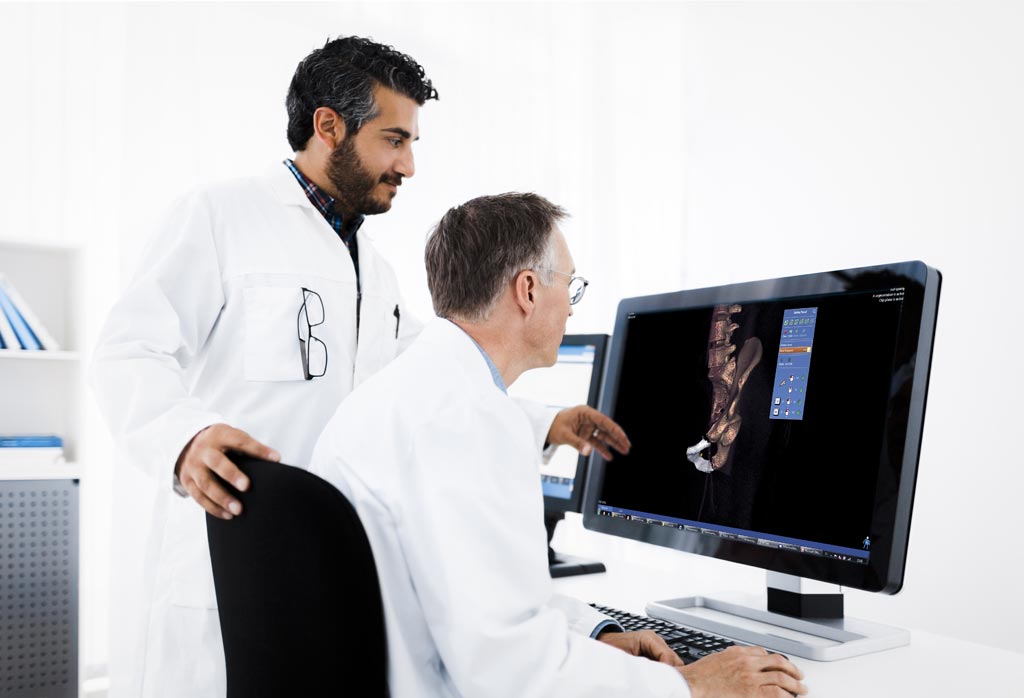3D Software Improves Orthopedic Surgery Outcomes
By MedImaging International staff writers
Posted on 29 Jan 2018
Novel three-dimensional (3D) planning software can provide orthopedic surgeons with advanced visualization tools for treating complex trauma cases.Posted on 29 Jan 2018
The Sectra (Linköping, Sweden) 3d Trauma pre-operative planning solution aids trauma surgeons visualize body structure and improve operating efficiency by rendering standard computerized tomography (CT) images into a 3D interactive image that can be segmented, manipulated, mirrored, templated, and 3D printed. Surgeons can thus study a joint surface or hidden objects, such as the acetabulum in a pelvic fracture, minimizing the risk of surprises and stress during surgery and shortening the time spent in the operating room.

Image: The 3D planning software is designed to improve oprthopedic trauma surgery outcomes (Photo courtesy of Sectra).
Tools included in Sectra 3D Trauma include a bone segmentation tool that allows users to mark bone fragments and choose whether they remain on screen, are hidden from view, or are marked for repositioning. Each fragment is color-coded for easy visualization; after marking a bone fragment, the system automatically creates a new color. An explode function moves all the marked bone fragments away from the center of the fracture, helping to confirm that no fragments have been left behind, and that no other structures will potentially interfere with implants.
When bone segmentation is complete, the marked fragments can be repositioned manually using the mouse or a touchscreen interface. Bone alignment can also be done automatically by simply choosing landmarks for the software to identify. Subsequently, template from major manufacturer and generic templates that include screws, nails, plates, and a full library of other components can be overlaid so that the most suitable implants are available during surgery. Bone fragments can be saved and exported as STL and OBJ files to 3D printers, allowing for further surgical planning and educational use.
In addition, a contouring template function allows users to add screws and holes if needed to the on-screen or 3D printed model, which can then be used as a guide to select plate shape, size, length, and screw placement, as well as pre-bend implants even before entering the operating room. Other features include a mirror bone function, which can be used as a support tool to reduce fractures or analyze malalignment, and a split bone feature for planning surgical correction of an impacted fracture.
“Sectra's innovative 3D solutions will enable us to make full use of the acquired images, resulting in cutting edge delivery of care to our orthopedic patients,” said William Ricci, MD, chief of the orthopedic trauma Service at the Hospital for Special Surgery (HSS, New York, NY, USA), which has implemented the system. “This 3D platform will improve the quality of pre-operative planning with potential for improved surgical outcomes.”














